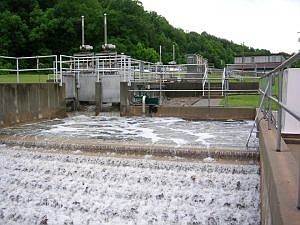- April 23, 2024
-
-
Loading

Loading

The Palm Coast City Council discussed at a Tuesday workshop potential alternatives to the propose water and sewer rate increases, which would increase the average customer’s bill by $4.61 per month in 2013, with additional increases planned for the following years. The proposal has received wide criticism from residents.
Jeff Wilson, a senior consultant with Public Resources Management Inc. presented to the City Council seven alternative options for handling the rate increases, which are needed to fund infrastructure costs related to the city’s utility.
“We’re trying to address what you asked us to do, which is look at some other options and address questions,” said Palm Coast City Manager Jim Landon.
Of these options, the one that earned the most attention from council members was pushing growth-related infrastructure projects beyond the current forecast period. This would reduce the capital improvement plan by approximately $24 million, but could be problematic if short-term growth were too great for the current utility system to handle.
Doing so would hold the 2013 rate increase at $4.61 per month. However, each of the next four years would mark a lower rate increase than what is currently proposed. For example, the current proposal, if adopted, would increase rates by $4.15 per month in 2014; this option would reduce that increase to $2.37 per month.
The option would also result in the need to reevaluate utility rates in fiscal year 2015.
City staff will draft several resolutions including different options, which the council will discuss and potentially decide upon at its next meeting at 9 a.m. Feb. 19. Public comment will be heard.
Below is an outline of the other options the council heard:
The first option discussed was reducing the funding for renewal and replacement of utility infrastructure from 10% to 5%. This would reduce the 2013 increase to $2.97 per month for the average utility customer.
“This would result in a temporary savings to the customer,” Wilson said. “By doing that, the city will have to continually borrow money for (renewal and replacement) projects and over time, that continued borrowing will result in higher rates.”
While the 2013 rate increase would show a marked reduction if this option were implemented, the increases for the following four years would show little reduction from the current proposed rates.
Another option would be to address only the rate increases needed immediately by adopting a two-year plan that addresses immediate utility needs only, which are covering operating cost increases, meeting immediate capital requirements, increasing renewal and replacement funding to avoid future borrowing and maintaining adequate operating reserves.
Similarly to pushing back growth-related infrastructure projects, this option would hold the 2013 rate increase at $4.61 per month, with a reduced rate increase of $2.37 per month in 2014. Rates would need to be revisited for the 2015 fiscal year.
Another option would be adopting a different phasing schedule for the rate increases. The current proposal will increase rates by 8% in 2013, by 7% in 2014 and 2015, by 2% in 2016 and by 2.2% in 2017.
Many residents have questioned why the increases can’t be more evenly distributed. But if the city increased rates by 5% each year until 2017, Wilson said, the utility would not raise enough money to meet expenditure requirements for fiscal years 2014 through 2016.
The only alternative increase phasing schedule that would work would be to adopt a 6% increase in 2013, a 5% increase in 2014 and 2015, a 2% increase in 2016 and a 2.2% increase in 2017.
This would result in a 2013 increase of $3.52 per month for the average utility customer.
City Council also considered lowering senior lien debt service coverage to 140%, but staff said if this were to happen, the utility system would not have enough cash flow to meet its expenditure requirements. At that point, the utility would have to lower its renewal and replacement funding.
A sixth option would be to increase the utility’s revenue growth projects over the forecast period to account for additional customer growth.
But Wilson said doing this would not be justifiable, because the current rate increase proposal is based on recent customer growth trends as it is. A better alternative would be to reduce the capital plan for growth-related projects in a manner similar to that outlined in options two and three.
The final option explored was to allow the utility system’s bonds to be downgraded by rating agencies. The current proposal includes generating enough debt service coverage funding to maintain a favorable bond credit rating.
Reducing this reserve would result in a 2013 rate increase of $3.93 per month. The next four years would mark slight decreases in the current projected rates.
And downgrading will affect future costs of borrowing, because the utility would likely have to borrow at higher interest rates, which could increase rates long-term.